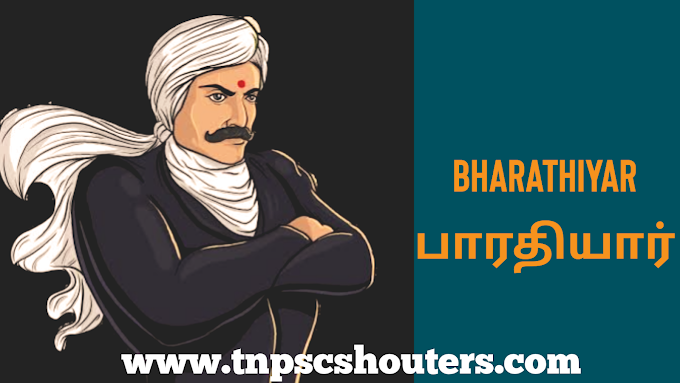TAMIL
- இந்தியாவில் 15-49 வயதுடைய ஆண்களில் சுமார் நான்கில் ஒரு பங்கினருக்கும், அதே வயதுடைய பெண்களில் பாதிக்கும் மேற்பட்டவர்களுக்கும் ரத்த சோகை உள்ளது தெரியவந்துள்ளது.
- ஐந்து வயதுக்கும் குறைவான இந்தியக் குழந்தைகளில் மூன்றில் இரண்டு பங்கிற்கும் அதிகமான குழந்தைகளுக்கு ரத்த சோகை உள்ளது.
- முந்தைய ஆண்டுகளுடன் ஒப்பிடுகையில் இந்திய அளவில் குழந்தை பெறும் வயதுள்ள பெண்களுக்கு ரத்த சோகை அதிகரித்துள்ளதையே தரவுகள் காட்டுகின்றன. தமிழ்நாட்டில் முந்தைய ஆண்டுகளைவிட குறைந்திருந்தாலும், அதில் கவலைப்பட வேண்டிய ஒரு தகவலும் உள்ளது.
- 2019-2021 காலகட்டத்தில் நடத்தப்பட்ட தேசிய குடும்பநல ஆய்வு -5இல், 15-49 வயதாகும் பெண்களில் 57% பேருக்கும், அந்த வயதுக் குழுவின் ஒரு பகுதியான 15-19 வயதாகும் பெண்களில் 59.1% பேருக்கும் ரத்த சோகை உள்ளது தெரிய வந்தது.
- 2015-16இல் நடத்தப்பட்ட தேசிய குடும்பநல ஆய்வு - 4, 15-49 வயதாகும் பெண்களில் 53.1% மற்றும் 15-19 வயதாகும் பெண்களில் 54.1% பேருக்கும் ரத்த சோகை இருந்ததாகக் கூறுகிறது.
- 15-49 வயதுடைய ஆண்களில் ரத்த சோகை இருப்பவர்களின் விகிதம் தேசிய குடும்பநல ஆய்வு - 4 காலகட்டத்தில் 22.7 சதவிகிதத்தில் இருந்து, ஆய்வு -5 காலகட்டத்தில் 25 சதவிகிதமாகவும், 15-19 வயதுடைய ஆண்களில் அது 29.2 சதவிகிதத்தில் இருந்து 31.1 சதவிகிதமாகவும் அதிகரித்துள்ளது.
- குழந்தைகளையும் ரத்த சோகை விட்டுவைக்கவில்லை. பிறந்து 6 முதல் 59 மாதம் ஆகியுள்ள குழந்தைகளிடையே நிலவும் ரத்த சோகை விகிதமும் 2015-16இல் 58.6 சதவிகிதத்தில் இருந்து, 2019-21 காலகட்டத்தில் 67.1% ஆகியுள்ளது.
- குழந்தைகள், ஆண்கள், பெண்கள் என அனைத்து குழுவினரிடையேவும் ரத்த சோகை பாதிப்பு நகர்புறப் பகுதிகளில் இருப்பவர்களை விட கிராமப்புறங்களில் வசிப்பவர்களுக்கு அதிகமாக உள்ளதை தேசிய குடும்பநல ஆய்வு -4 மற்றும் 5இன் தரவுகள் வெளிக்காட்டுகின்றன.
- தமிழ்நாட்டைப் பொறுத்தவரை 2015-16இல் 15-49 வயதுக்கு உட்பட்ட பெண்களில் 55 சதவிகிதமாக இருந்த ரத்த சோகை, 2020-21இல் 53.4 சதவிகிதம் ஆக குறைந்துள்ளது. 15-19 வயதினரிடையே இது 54.2 சதவிகிதத்தில் இருந்து, 52.9 சதவிகிதம் ஆக குறைந்துள்ளது.
- 15-49 வயதில் இருக்கும் ஒட்டுமொத்த பெண்களுக்கு ரத்த சோகை குறைவாக இருந்தாலும், இதே வயதுக் குழுவில் இருக்கும் கருவுற்ற பெண்களுக்கான ரத்த சோகை 44.4 சதவிகிதத்தில் இருந்து 48.3 சதவிகிதம் ஆகியுள்ளது. ரத்த சோகை பாதிப்பு முக்கியமாக இருக்கக் கூடாதவர்கள் கருவுற்ற பெண்கள்தான் எனும்போது இந்த விகிதம் உயந்திருப்பது நிச்சயம் நல்ல சமிக்ஞை அல்ல.
- உலகெங்கிலும் ஐந்து வயதுக்கும் குறைவான 42% குழந்தைகளுக்கும், கர்ப்பிணிப் பெண்களில் 40% பேருக்கும் ரத்த சோகை குறைபாடு இருப்பதாக மதிப்பிடப்படுகிறது என்கிறது உலக சுகாதார நிறுவனத்தின் இணையதளம். அப்படியானால் இந்தியா மற்றும் தமிழ்நாட்டின் ரத்த சோகை பாதிப்பு விகிதம் சர்வதேச சராசரியைவிட அதிகம்.
- About one-fourth of men aged 15-49 in India and more than half of women of the same age group are found to be anemic. More than two-thirds of Indian children under the age of five are anemic.
- Data shows an increase in anemia among women of childbearing age in India compared to previous years. Even though Tamil Nadu has decreased from the previous years, there is one thing to worry about.
- In the National Family Health Survey-5 conducted during the period 2019-2021, 57% of women aged 15-49 years and 59.1% of women in the age group 15-19 years were found to be anemic.
- The National Family Health Survey conducted in 2015-16 – 4 reported that 53.1% of women aged 15-49 years and 54.1% of women aged 15-19 years had anaemia.
- The proportion of anemic men aged 15-49 years increased from 22.7 percent in the National Family Health Survey-4 period to 25 percent in the Survey-5 period, and in men aged 15-19 years it increased from 29.2 percent to 31.1 percent.
- Anemia did not spare the children either. The prevalence of anemia among children aged 6 to 59 months has also increased from 58.6 percent in 2015-16 to 67.1 percent in 2019-21.
- Data from National Family Welfare Survey-4 and 5 reveal that the prevalence of anemia among all groups including children, men and women is higher in rural than in urban areas.
- For Tamil Nadu, the prevalence of anemia among women aged 15-49 in 2015-16 has decreased to 53.4 percent in 2020-21, from 55 percent in 2015-16. Among 15-19-year-olds, it dropped from 54.2 percent to 52.9 percent.
- Although anemia was lower overall for women aged 15-49, anemia for pregnant women in the same age group rose from 44.4 percent to 48.3 percent. A rise in this ratio is definitely not a good sign when pregnant women are the ones who should not be at high risk of anemia.
- It is estimated that 42% of children under the age of five and 40% of pregnant women worldwide are anemic, according to the World Health Organization website. So India and Tamil Nadu's anemia prevalence rate is higher than the international average.










